Musée d'arts folkoriques de Gahoe (가회민화박물관)
7.7Km 2020-05-12
17, Bukchon-ro 12-gil, Jongno-gu, Seoul-si
+82-2-741-0466
Ouvert en 2002, Gahoe musée présente des expositions, peintures populaires et les amulettes qui reflète le style de vie et les souhaits du peuple coréen depuis les temps anciens.
Intérieur de la galerie Hanok, les visiteurs peuvent se plonger dans les traditions de la Corée. Vous trouverez des tableaux anciens du peuple, des peintures des croyances religieuses, et des tuiles en forme d'êtres humains ou des gobelins. Vous trouverez également des paravents d'amulettes et de voir la sagesse des gens dans l'ancien temps pour surmonter les moments difficiles grâce à une variété d'amulettes.
Ilsong Kalguksu (일송칼국수)
7.7Km 2021-03-18
44, Seonggyungwan-ro, Jongno-gu, Seoul
+82-2-765-0880
This is a Korean cuisine located in Jongno-gu, Seoul. A store serving dishes at low prices. The best menu at this restaurant is noodle soup with clams.
Musée du noeud Dong-Lim (동림매듭박물관)
7.7Km 2021-03-27
10, Bukchon-ro 12-gil, Jongno-gu, Seoul-si
+82-2-3673-2778
Le musée du noeud Donglim ouvert en avril 2004 vous fait découvrir les noeuds décoratifs traditionnels coréens maedeup comme le norigae pour le hanbok, mais vous pourrez aussi y voir des ceintures et bourses traditionnelles et des matériaux comme du fil, de la corde ou encore des accessoires. Situé dans une maison traditionnelle hanok, on y trouve plusieurs créations, anciennes et modernes, ainsi que des créations qui reflètent les tendances d'aujourd'hui.
Musée National d'Art Contemporain (국립현대미술관 서울관)
7.7Km 2023-06-23
30, Samcheong-ro, Jongno-gu, Seoul
+82-2-3701-9500
Le Musée National d'Art Contemporain de Séoul a ouvert ses portes en 2013 au centre de Séoul à côté du palais Gyeongbok. Le musée a adapté un concept de 'cour' pour mieux se mélanger aux alentours et lier organiquement l'extérieur et l'intérieur du bâtiment.
Sur le terrain du musée, il y avait autrefois quelques grandes organisations administratives de l'époque Joseon mais aussi les hôpitaux militaires lors de la colonisation japonaise. Ce site est un site historique tant sur le plan politique que culturel. Notez que le musée est fermé les mercredis et samedis.
*Jour de l'inauguration : 12 novembre 2013
Inwoohouse [Korea Quality] / 인우하우스 [한국관광 품질인증]
7.7Km 2023-04-13
9, Gyedong 6-gil, Jongno-gu, Seoul
02-742-1115
Run by a couple hailing from Bukchon, Inwoo House is located in an alleyway in Gye-dong, Jongno-gu, which is part of Bukchon that is well-known for old hanok houses. Inwoo House, meaning 'the house of Inwoo,' is inhabited by the owner couple and eight-year-old son Inwoo and his younger brother Yeonwoo. The couple, who have always lived in Bukchon, moved to Inwoo House in 2010; their parents run another guesthouse -- Yeonwoo House -- in Gahoe-dong, which isn’t far from Inwoo House. These two hanok guesthouses seek to provide guests with an opportunity to experience the true aspect of traditional Korean house amid the natural environment. Inwoo House, which has the typical style of hanok in the area, features a cozy yard, a toenmaru (narrow wooden porch running along the outside of the building), and several charming decorative items. It has three rooms – Tokki-bang and Haejanggeum-bang situated in Sarangchae (a detached building) and Nori-bang, which is a communal space. Due to its quiet location, guests can enjoy relaxation with a serene atmosphere in their rooms, which are decorated with calligraphic works and furniture inlaid with mother-of-pearl in a simple way. Each room is equipped with a bathroom. The guesthouse offers breakfast such as toast or tteokguk (rice cake soup). Inwoo House is an ideal place to stay for guests with children as the owner couple have children with whom children can play in the alley, yard, or toenmaru with an interesting hanok environment. The guesthouse also provides various traditional activities including traditional Korean clothes experience, traditional Hanji (Korean paper) craft experience, traditional knot bracelet making, and fan decorating, which are popular among foreign tourists and children. It is adjacent to restaurants, coffee shops, convenience store, and other tourist attractions including Gyeongbokgung Palace, Changdeokgung Palace, Insa-dong, and Samcheong-dong.
Palais Gyeonghuigung (경희궁)
7.7Km 2021-07-21
55, Saemunan-ro, Jongno-gu, Seoul-si
+82-2-724-0274
A la fin de la période Joseon, Gyeonghuigung servait de palais secondaire pour le roi. Comme il se situe dans la partie ouest de Séoul, il
porte aussi le nom de 'Seogwol'. Le palais secondaire était le palais où le roi se déplaçait en cas d’urgence. De Injo à Cheoljong, environ dix rois de la dynastie Joseon sont restés à Gyeonghuigung. Ce palais qui a été construit en utilisant la géographie inclinée aux alentours de la montagne possède une beauté traditionnelle en
matière d'architecture et une grande signification historique. A une
certaine époque, sa réputation était telle qu'il y avait même un pont arqué le reliant au palais Deoksugung. Les bâtiments Sungjeongjeon et Jajeongjeon
sont pour l’audience royale du roi, tandis que les bâtiments Yungbokjeon et Hoesangjeonet
servaient à dormir. Au total, le palais comprenait 100 bâtiments.
Mais, lorsque le Japon envahit la Corée
en 1908, l’école Japonaise Gyeongseong s'est installée dans le palais, et une grande partie du palais a été nivelée ou déplacée. Actuellement, la porte d(entrée
de Gyeonghuigung, la Porte Heunghwamun est utilisée en tant que porte d’entrée principale de l’ hôtel Silla, et Sungjeongjeon est à l’Université Dongguk. L’école a déménagé dans un autre endroit tandis
que le Sungjeongjeon et quelques autres bâtiments ont été reconstruits.
Près du palais Gyeonghuigung se trouvent le Musée d’Histoire de Séoul, la rue Jeongdong, et la rue très active Jongno. Après avoir visité le palais Gyeonghuigung, vous pouvez traverser la rue Jeongdong et marcher jusqu’au palais Deoksugung. La rue avec un mur de pierres menant
au palais Deoksugung est considérée comme l'une des rues les plus élégantes de Séoul.
Artshop Mu (아트샾 무)
7.7Km 2017-09-18
9-1, Bukchon-ro 11-gil, Jongno-gu, Seoul-si
+82-2-738-3011
“Artshop Mu” est une boutique d'art vendant des bijoux faits à la main créés par la propriétaire et artiste Jin Jin-Suk. Chaque pièce est réalisée manuellement avec des pierres exotiques, perles et autres pendentifs importés d'Inde et du Népal.
Populaires chez les trentenaires et quarantenaires, les colliers sont vendus entre 200 000 et 300 000 wons, et les boucles d'oreille et bracelets environ 100 000 wons.
Ahwon Gongbang (아원공방)
7.7Km 2014-08-25
16, Bukchon-ro 5ga-gil, Jongno-gu, Seoul-si
+82-2-734-3482
Ahwon Gongbang est un studio dévoué à l’artisanat en métal. Il offre de nombreux articles artisanaux faits mains tels que des chandeliers, des miroirs, et des accessoires en argent. Géré par les mêmes soeurs, il allie l’art moderne et la beauté antique à Samcheong-dong. Sophistiqués, les articles orientaux faits par les artistes ont attiré de nombreux touristes internationaux et plus particulièrement des visiteurs japonais. C’est l’endroit idéal pour faire du shopping ou simplement pour profiter de l’art artisanal.
Seoul Garden Hotel (베스트웨스턴 프리미어 서울가든호텔)
7.8Km 2021-05-07
58, Mapo-daero, Mapo-gu, Seoul
Seoul Garden Hotel is the only 4-star hotel in the Mapo area. Conveniently located near Yeouido’s business center and the shopping area of Itaewon, the hotel is a prime accommodation for business travelers as well as leisure guests. The hotel is between two subway stations on four different lines, including the Airport Railroad, making it easy to get to the hotel. Guests can be assured of quality of accommodations at reasonable rates. The hotel includes restaurants, banquet halls, a business center, a fitness center, and more.
Bukchonmaru hanok guesthouse [Korea Quality] / 북촌마루한옥게스트하우스 [한국관광 품질인증]
7.8Km 2020-09-10
152, Changdeokgung-gil, Jongno-gu, Seoul
+82-10-3253-8751
Bukchonmaru Hanok Guesthouse is located between “Bukchon Views 2 and 3” on a hill in Bukchon Village in Seoul. This two-storied hanbok building with a terrace, which is rarely found among other hanok structures in the area, offers a splendid view of Seoul. In particular, the summit of a hill next to the main gate of Choong Ang High School where the guesthouse is situated is known as the filming location for the famous Korean TV series Winter Sonata (2002). When you open the main gate and go up to the first floor, a small yard is seen with a group of jars on one side. After entering the sliding door through the yard, there is daecheong maru (main floored room) that features the doors opening in all directions and a high ceiling with rafters, making the space open and cozy. The hanok building consists of two floors – the ground floor is equipped with special furniture, a jar table and a log chair made by the owner, and on the first floor are guestrooms comprised of one large room and two small rooms. The neat and clean rooms are designed in a simple way and have lovely bedding with the pattern of five cardinal colors. Its staff members can speak English and Chinese to communicate with guests from other countries. Every morning, guests engage in animated conversation while enjoying a Korean home-style breakfast prepared by the owner in a friendly atmosphere. After having breakfast, if guests want, they can try on traditional Korean clothes (hanbok) and take photographs inside and around the guesthouse to create interesting memories. The guesthouse also provides a hanbok rental service (KRW 30,000 for a day) and tourists wearing traditional Korean clothes can enter both Changdeokgung Palace and Gyeongbokgung Palace, which can be reached on foot within 10 to 15 minutes, free of charge. Moreover, guests can enjoy an open view of the area including Gahoe-dong, Gye-dong and even the lights of the Namsan Seoul Tower at night from the roof top.
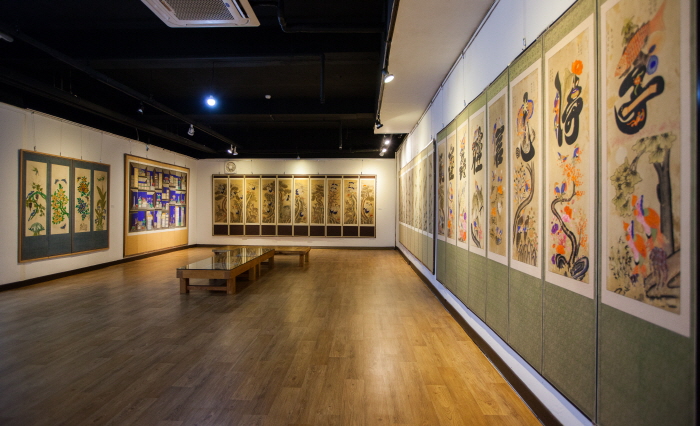
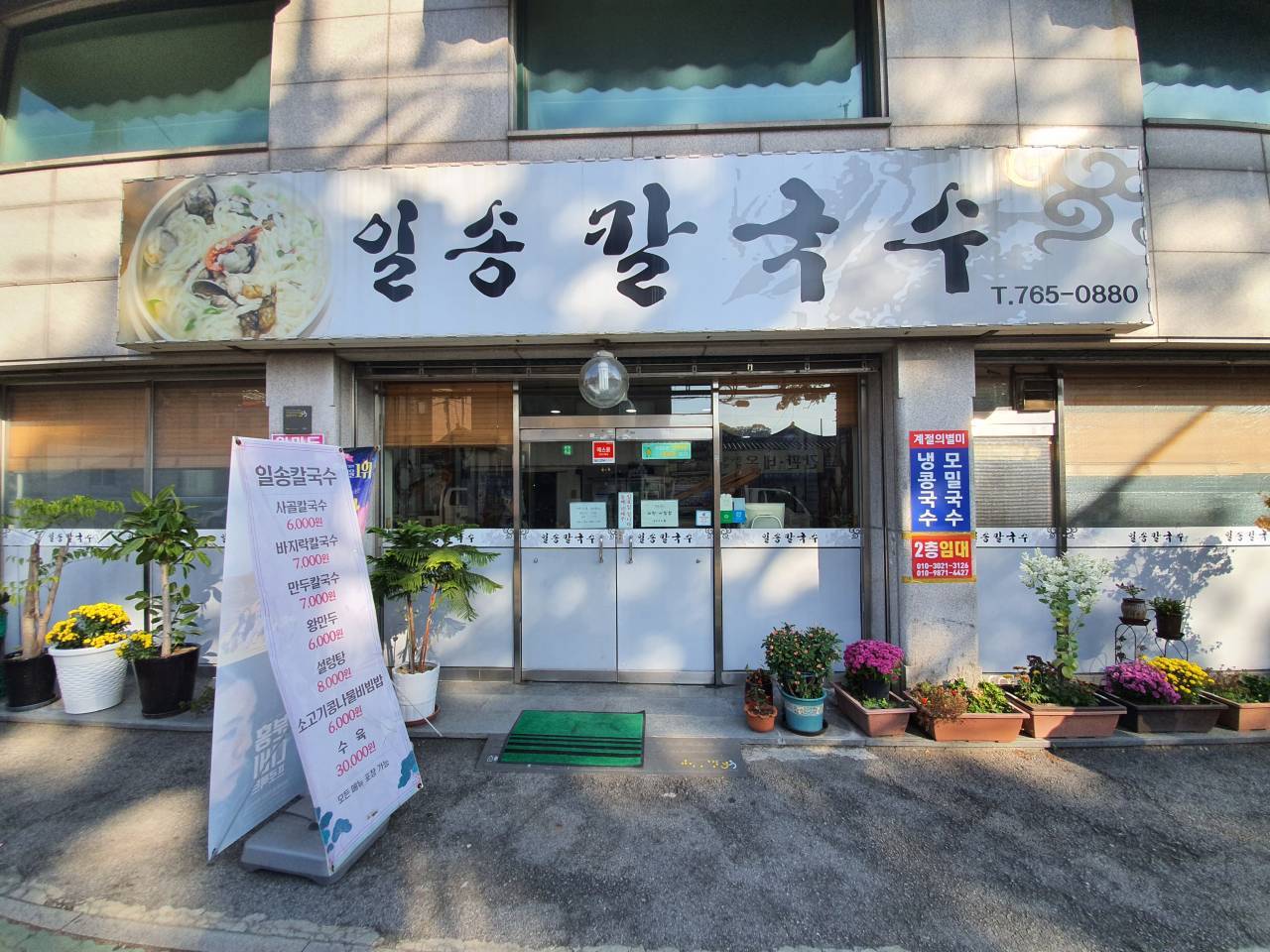
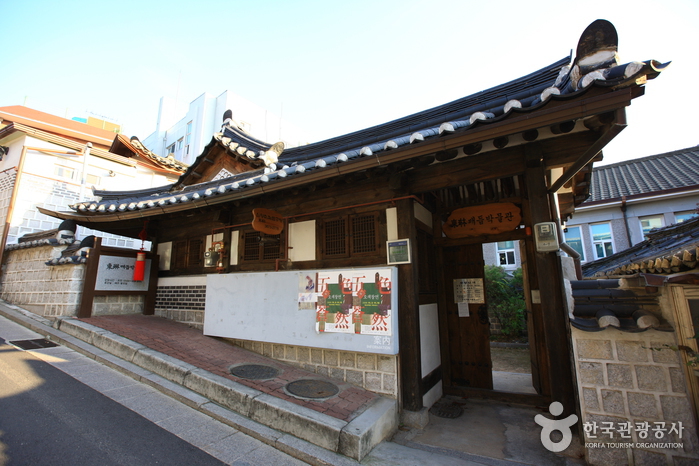
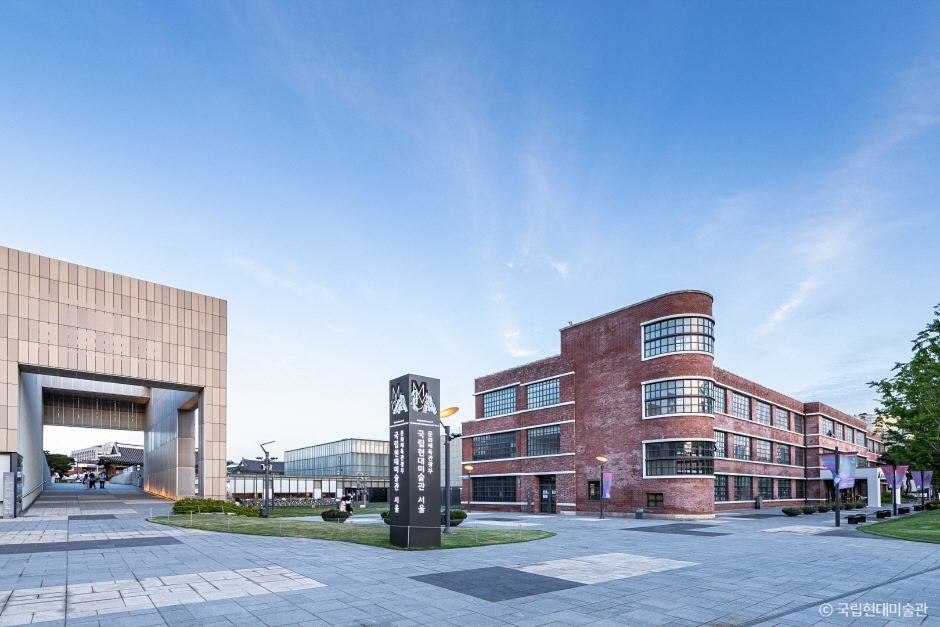
![Inwoohouse [Korea Quality] / 인우하우스 [한국관광 품질인증]](http://tong.visitkorea.or.kr/cms/resource/64/2633664_image2_1.jpg)
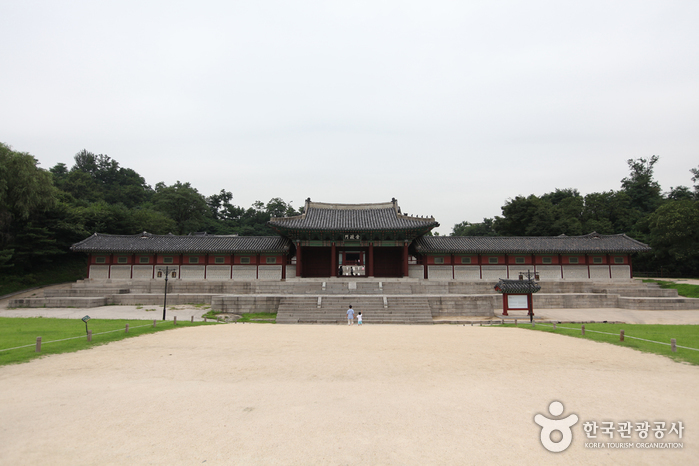
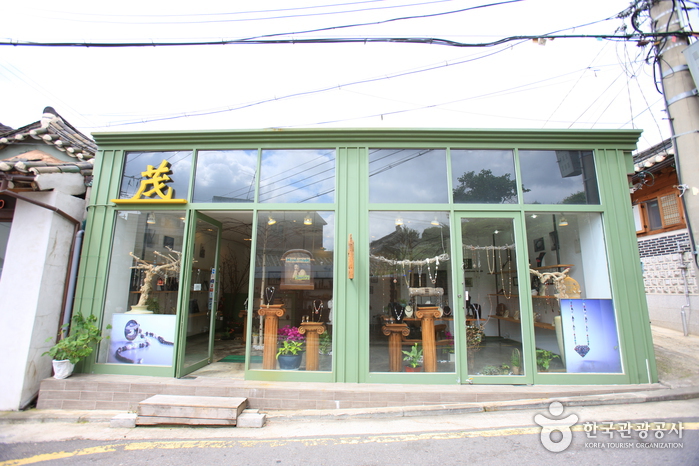
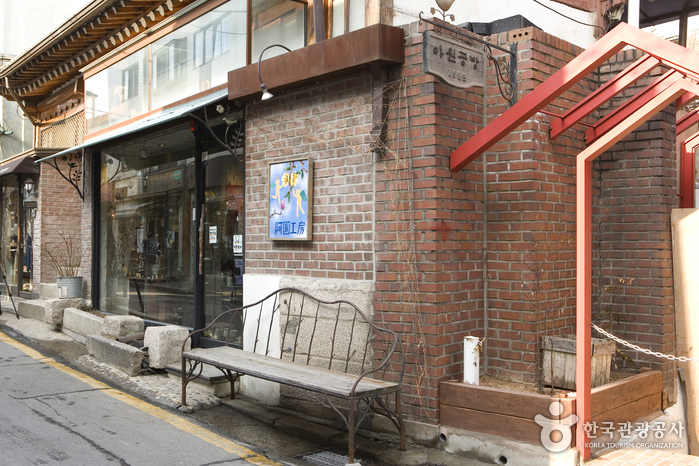
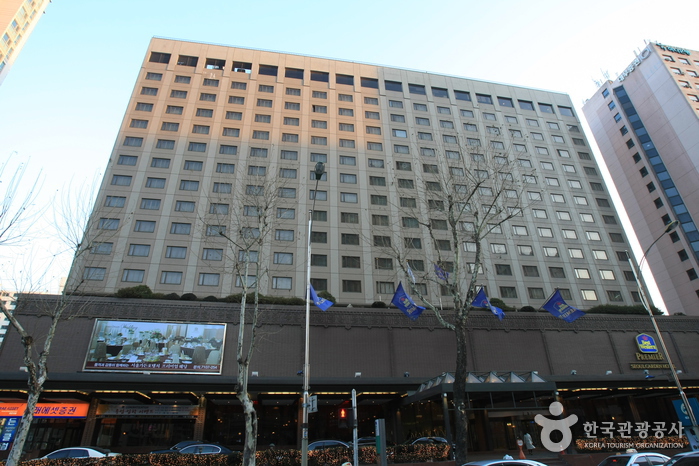
![Bukchonmaru hanok guesthouse [Korea Quality] / 북촌마루한옥게스트하우스 [한국관광 품질인증]](http://tong.visitkorea.or.kr/cms/resource/32/2574032_image2_1.jpg)
 Français
Français
 한국어
한국어 English
English 日本語
日本語 中文(简体)
中文(简体) Deutsch
Deutsch Español
Español Русский
Русский